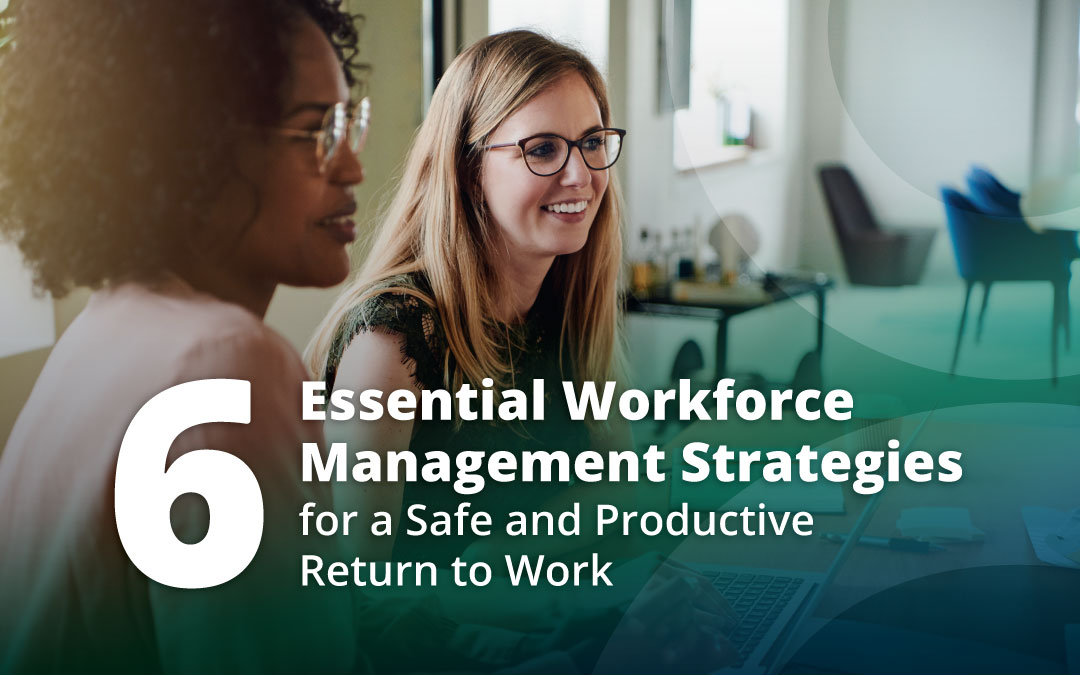Simplifying COVID-19 Contact Tracing and Employee Notification in the Workplace

Jill Keelan
Director, Product Marketing
Despite the workplace safety precautions your company may have in effect as more employees begin to return to work onsite—social distancing, pre-shift health screenings as well as staggered shifts and employee breaks—it’s imperative that your business is prepared for the unfortunate scenario where an employee is exposed to or diagnosed with COVID-19.
To prevent further exposure across your employees, customers, and the broader community, you’ll want to take the necessary steps to ensure your company has a contact tracing and employee communication plan in place. Knowing when and where employees have worked, the areas they have accessed, and who they may have encountered is essential to mitigate risk.
One challenge for organizations with hundreds or even thousands of employees in a single location is the ability to communicate the exposure risks quickly. That’s why we’ve put together these three steps to help your company prepare to address any confirmed or suspected COVID-19 employee exposure in the workplace.
1. Identify ‘Who,’ ‘When’ and ‘Where’ in the Workplace
Documenting your employees’ schedule, actual worked time as well as their workplace location (including buildings, areas, and departments) will help you streamline backtracking the ‘who,’ ‘when’ and ‘where’ of COVID-19 exposure in your workplace.
The implementation of staggered shifts and breaks will help minimize interaction or transfer across different work locations therefor reducing the potential risk of broader exposure across your workforce. Orderly passage in and out of the building will also give you an opportunity to clean and sanitize work areas between shifts with minimal cross-contamination.
By having these scheduling rules in place, your company will be able to respond quickly and report on at-risk employees that may have been exposed in the last 14 days. This employee information can also be exported and run against your sales data to help identify any customers who may also be at risk of exposure.
2. Isolate the Employees Impacted and Sanitize Your Workplace
In the event an employee has become diagnosed with COVID-19, you should send the employee home immediately and ask they isolate or quarantine until it is safe to be around others. Typically, a 14-day period is common, but it is best for the employee to seek medical advice as to when it is safe to be around others and return to work. You should also consider sending out a pre-shift health screening questionnaire prior to your employee entering the premises to determine whether the employee is cleared to enter the worksite.
In the instance an employee is unable to immediately leave the workplace, you should have an isolation plan in place until he/she is able to travel home. Following the departure of the employee, be sure to enforce your contract tracing plan in order to clear and disinfect any areas within the workplace. You will also need to determine the severity of exposure to physical spaces and surfaces within the workplace and make a decision to enact an emergency shutdown until resolved.
6 Essential Workforce Management Strategies for a Safe and Productive Return to Work
Download this eBook to learn 6 essential workforce management strategies that will help you design a safe and structured return-to-work plan.
3. Notify and Inform Any Employees at Risk
Once you have removed or isolated any employees who could risk the spread of COVID-19 and followed proper sanitization procedures, you should rely on your contract tracing data to interview those individuals who have been exposed or diagnosed in order to gather additional information and communicate next steps.
To expedite this process, you need to know the best way to contact employees, whether it’s phone, email, or text as well as an easy way to efficiently facilitate bi-directional communication. Consider sending employees automated surveys via their preferred contact method to quickly obtain additional information and logically determine next steps. Be sure to ask questions that help you understand their movements within the locations in which they worked and their level of interaction with others to help measure the risk of exposure.
During the contact tracing communication and notifications phase, be sure to protect the identity of the employees for privacy purposes.
Now is the time to have the proper workforce management solution in place so you can be prepared with a strategic contact tracing and communication plan in the instance your employees are exposed or diagnosed with COVID-19. Your employees should continue to communicate information about their work experience, such as where and when they worked or took breaks so you have sufficient information available to effectively initiate contact tracing procedures.
For an extensive guide that will help you plan your entire return-to-work journey, download our latest eBook, 6 Essential Workforce Management Strategies for a Safe and Productive Return to Work.

